The 1980s is not well known for its valuable baseball cards. Half of that decade was part of what we call the "junk wax" era. Throughout the late 1980s and early 1990s, baseball cards were overproduced, leading to a collapse of value. But people who dismiss this decade's cards as having no value miss a few important things. First, the early 1980s had lower print runs, so some of the cards from that period are worth quite a bit. Second, even the late 1980s "junk wax" cards have some rare and valuable gems. Finally, the cards from this decade are wonderfully campy, bringing an element of almost sublime ugliness that no other era can match. After all, we are talking about the days of Ronald Reagan, Rambo, Born in the USA, and Pretty in Pink. A time when America was at its garish worst, yet somehow also it's shimmering best.
Regarding value, one thing to remember is that the 1980s were the formative years for a generation still dominating baseball card collecting. Meanwhile, for younger kids, it is the source of inexplicable nostalgia, as expressed through shows like Stranger Things and The Goldbergs. Therefore, a substantial market for anything emblematic of that glitzy era exists.
The designs got increasingly adventurous and garish as the decade progressed. By its end, several high-profile companies were fighting for market share. These included Fleer, Donruss, Score, Upper Deck, and Topps. Beating off the competition required innovation, adaptability, and, most importantly, clashing ungodly color schemes and bad mustaches.
#15 1984 Fleer Update Kirby Puckett #U-93
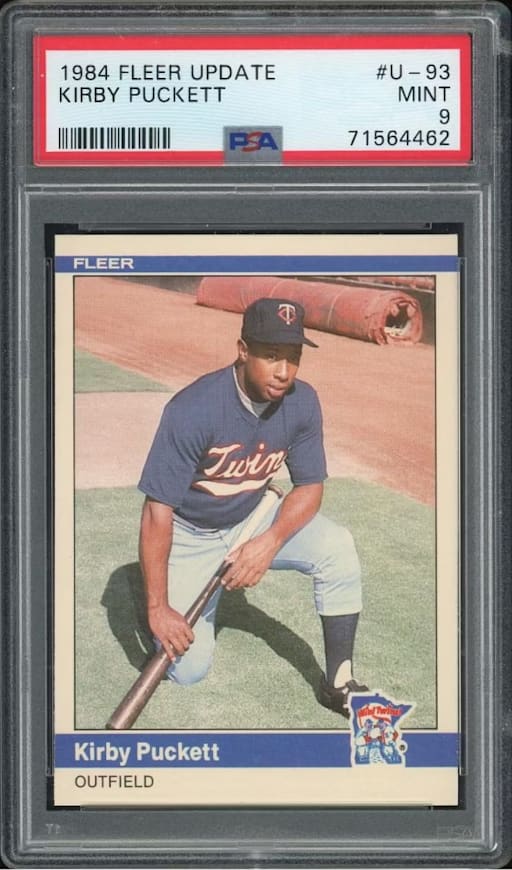
A PSA 10 has a value of $1,900
Kirby Pucket wasn't some highly-rated prospect. The man grew up in the south side of Chicago and worked on the assembly line at Ford Motors. But Puckett overcame that, and having a name that is almost a curse word to achieve greatness. Everyone remembers Kirby as a lethal hitter, but he also has 6 Golden Glove awards. The 1984 Fleer Update Kirby Puckett #U-93 is Kirby's biggest card because that set was printed in relatively small numbers. However, there are 589 PSA 10s on this card. So, we are talking about very relative levels of scarcity here.
#14 1984 Fleer Update Roger Clemens #U-27
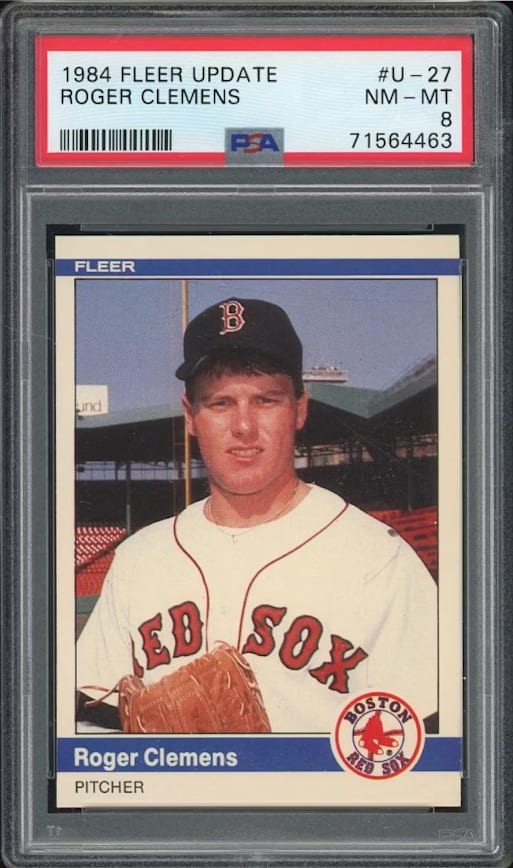
A PSA 10 has a value of $2,282
You don't get too many Fleer cards among the most valuable 1980s baseball cards. They saved all their firepower for basketball cards. But the 1984 Fleer Update Roger Clemens #U-27 is the exception to prove the rule. There is no doubt that statistically speaking, Roger is one of the best pitchers ever to hurl a ball at an ungodly speed. However, like many on this list, his legacy has been tarnished by the suspected use of performance-enhancing drugs. But if there is one thing we can learn from this list, it isn't being enshrined in Cooperstown that boosts your card values. Instead, it has a Hall of Fame-worthy career. And with 7 Cy Young awards (yes, you read that right), Roger Clemens certainly did.
And why is this card the winner? Because Fleer was, at the time, the weakest of the big card companies. And Fleer Update was the worst selling and, therefore, the least printed of their releases. Thus, the lack of success of the 1984 Fleer Update Baseball card set is paradoxically the source of the value of this card. I think this card is also popular because Clemens looks like a fatter version of Tom Brady here. Tell me I am wrong.
#13 1982 Topps Orioles Future Stars (Bob Bonner / Cal Ripken Jr. / Jeff Schneider) #21
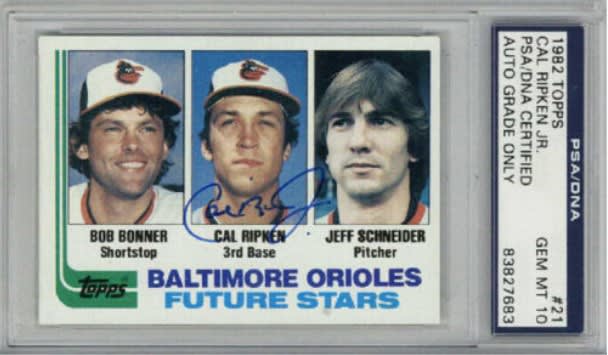
A PSA 10 has a value of $4,100
Three players are on this card, but we only care about one. I am talking, of course, about the legendary Jeff Schneider, who pitched a full 24 innings in the 1981 season, never to be heard of again. Then, of course, we can't forget Bobby Bonner, who batted .191 and retired to become a missionary to Zambia in 1984.
Oh wait, my editor is telling me to focus on Cal Ripken Jr. for some reason. The 1982 Topps Orioles Future Stars (Bob Bonner / Cal Ripken Jr. / Jeff Schneider) #21 is the best and most beloved rookie card of the "The Iron Man." Everyone remembers that Cal broke the record with 2,632 straight games played. But forget how good he was in that stretch with an incredible 19 All-Star appearances. If you think the value of this card isn't all that high, chew on this for a moment. There are 34,399 copies of this card. And it still sells for good money.
#12 1984 Donruss Don Mattingly #248
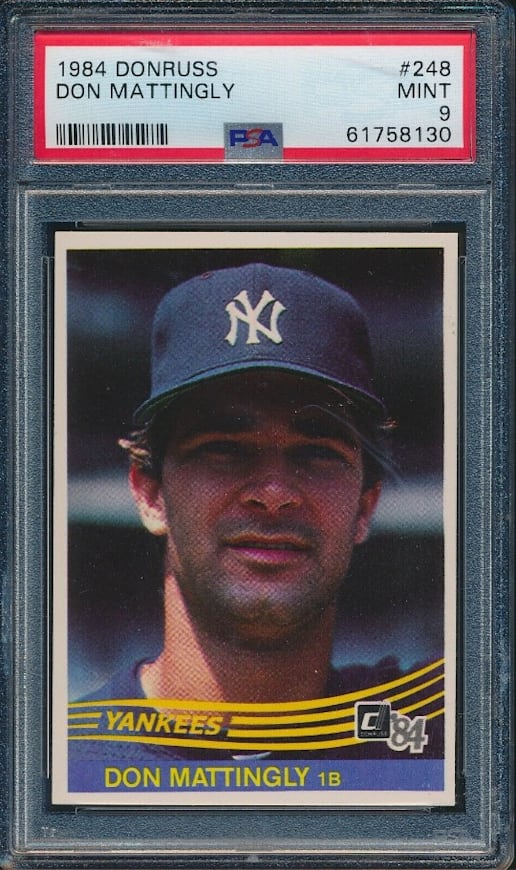
A PSA 10 has a value of $4,450
Aside from being the name of a dystopian novel and Van Halen's best album, 1984 was also one of the last years before the dawn of the "Junk Wax" era. The 1984 Donruss Don Mattingly #248 card is one of the rookie cards that ushered in that oft-maligned era. It shows the promising young rookie in his Yankees cap, already looking like a jaded veteran. Since Don Mattingly was the up-and-coming young prodigy for the most popular team in baseball, collectors were all over this card. It may not have brought in the millions they were hoping for, but since Mattingly had a strong career as a player and a lesser extent, as a manager, it still holds value. Some of it is definitely nostalgic.
#11 Tony Gwynn 1983 Topps #482
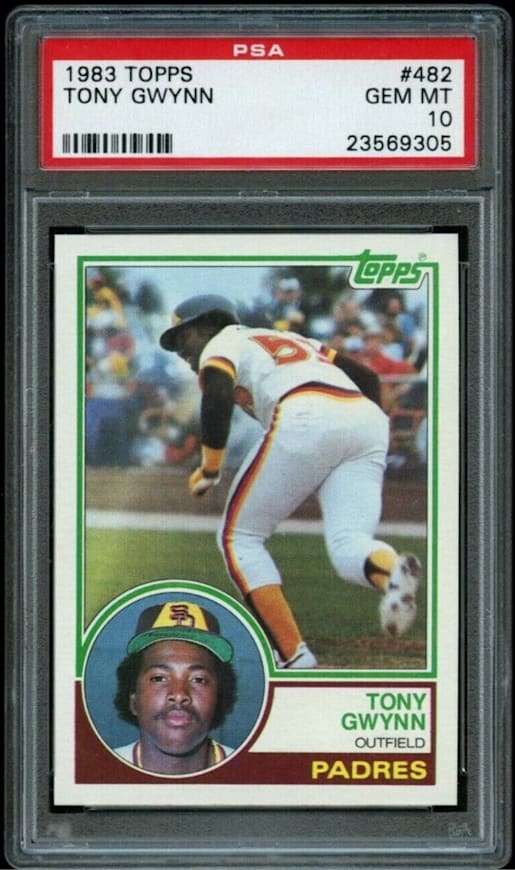
A PSA 10 has a value of $4,485
No one who saw Tony Gwynn play can forget it. You could always count on "Mr. Padre" to make contact and get that clutch hit more often than pitchers would like. Therefore, the 15-time All-Star and 8-time batting champion (!) remain one of the most collectible players of the era. Meanwhile, the Tony Gwynn 1983 Topps #482 card is one of the absolute best of the decade. It shows the man taking off from first base after observing contact at the plate.
Meanwhile, the close-up picture shows us his unforgettable afro and mustache. And that ugly Padre color design? Consummate 80s stuff.
#10 Barry Bonds 1986 Topps Traded Tiffany #11T
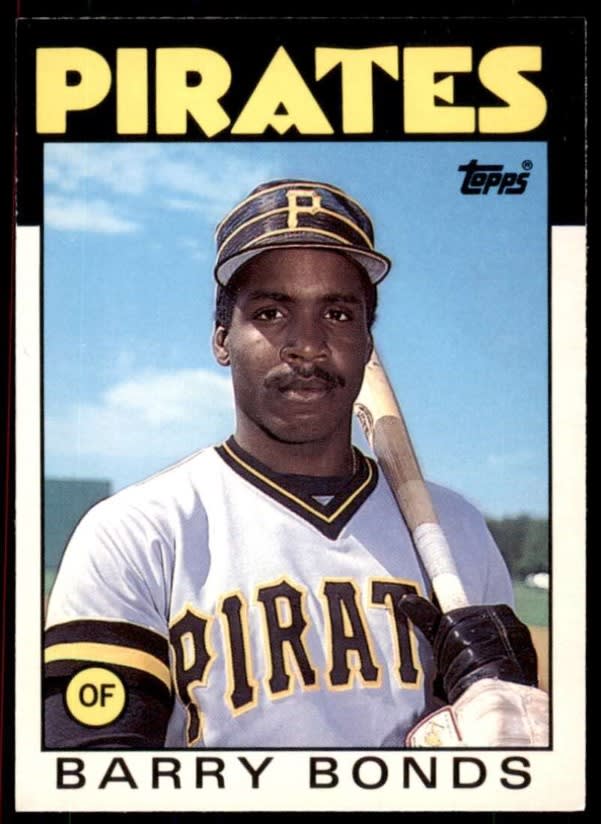
A PSA 10 has a value of $5,200
Sure, there are some questions surrounding his accomplishments. But Barry Bonds is the most offensively potent player in baseball history. At his peak, he was an automatic intentional walk. Occasionally even with the bases loaded. And it is no wonder he has the most home runs ever and is the only member of the 500-500 club, showcasing his epic baserunning and power-hitting skills.
The Barry Bonds 1986 Topps Traded Tiffany #11T is the one you want because Tiffany was the shorter print Topps product of the time. In addition, Topps Traded was a shorter print release than the other flagship releases. Therefore, their cards tend to be more expensive. This card shows very serious-looking Bonds staring intently at the camera. He is wearing that vaguely ridiculous old-school Pittsburgh Pirates cap once worn by the great Roberto Clemente.
#9 Wade Boggs 1983 Topps #498
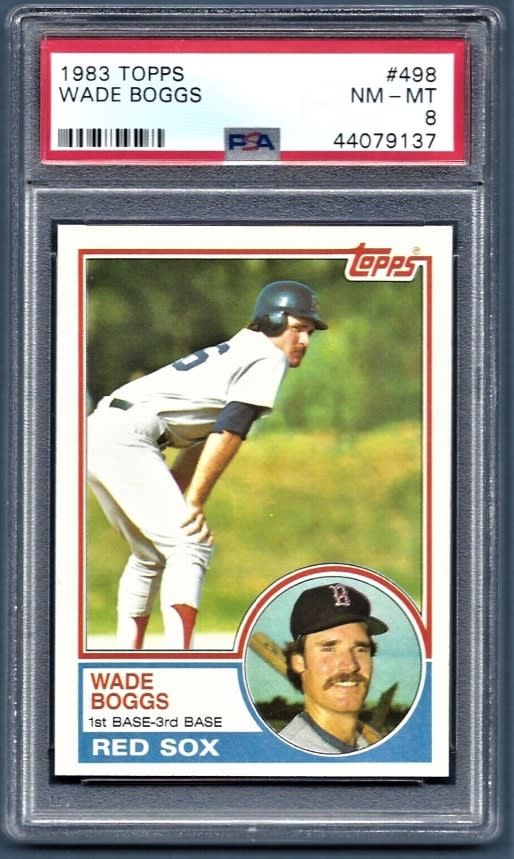
A PSA 10 has a value of $5,390
The 1983 Topps Baseball cards design is an underrated gem. The combo of an action picture and a headshot, with a gaudy 1980s design, is priceless. As luck would have it, the release hosted the rookie cards of two of the best natural hitters ever: Tony Gwynn and Wade Boggs. Boggs could seemingly hit over .300 with his eyes closed in the 1980s. The Wade Boggs 1983 Topps #498 confirms what we have long known. Wade had a smile as devastating as his bat.
#8 1981 Topps #315 Kirk Gibson Rookie Card
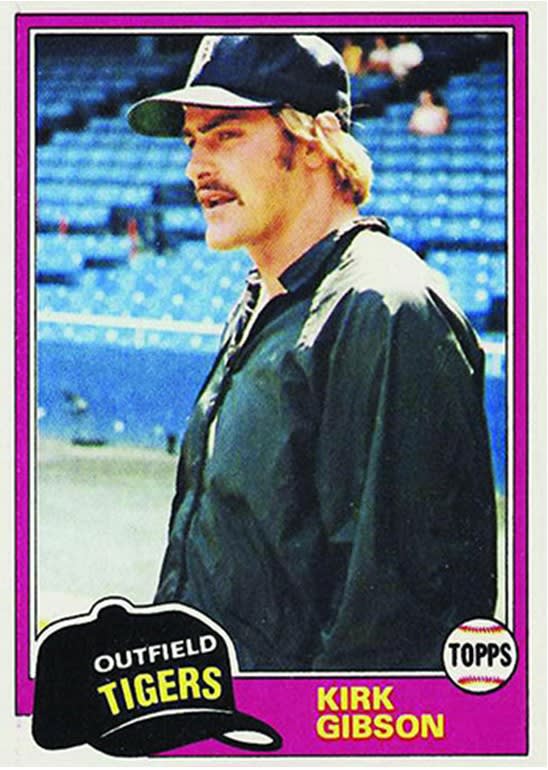
A PSA 10 has a value of $9,900
Kirk Gibson was a fine player. He even won the MVP in 1988 and later was the 2021 Manager of the Year. But he isn't a Hall-of-Famer. And no, it's not because of steroids. Kirk isn't entirely of that tragic generation. Instead, he just wasn't quite good enough. So why is his rookie card so sought out? Gibson is an iconic figure for his two massively essential home runs. One clinched game 5 of the 1984 World Series for the Tigers. The second was a walk-off game-winner for the Dodgers in game 1 of the 1988 World Series. The way Kirk pumped his fists while rounding the bases made him a Los Angeles icon and guaranteed a long-term market for his cards.
The 1981 Topps #315 Kirk Gibson Rookie Card is also valuable because of its look. The rookie looks impossibly cool as he flaunts his thick mustache and lustrous blonde hair. Anyone who looks this imposing in their training jacket deserves a valuable card.
#7 1980 Topps #580 Nolan Ryan
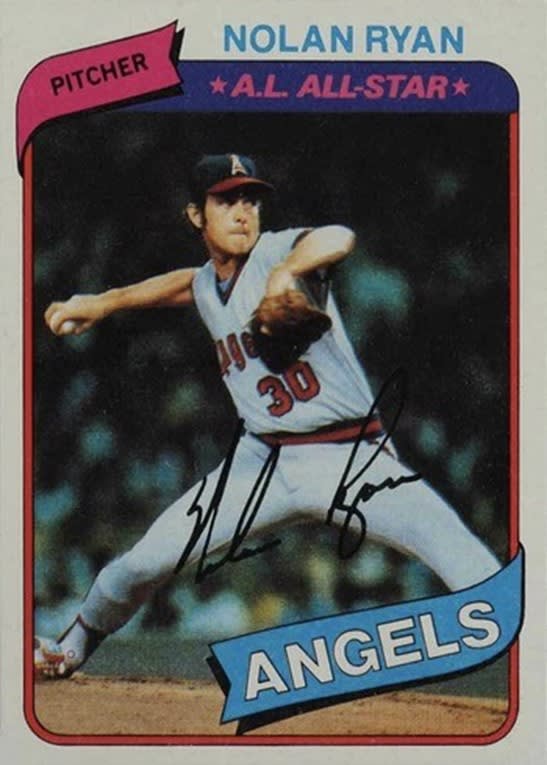
A PSA 10 has a value of $10,700
Nolan Ryan cards tend to have a very high value. A PSA 10 of rookie card with Jerry Koosman went for $600,000 a couple of years ago. And there are good reasons for that. Nolan's unique combo of nasty stuff and superhuman longevity led to one of the most impressive pitching careers ever. "The Ryan Express" has an all-time record of 5,714 strikeouts, and batters had an all-time batting average low of .204 against the ace.
But the 1980 Topps #580 Nolan Ryan is quite a chronological distance from Ryan's 1968 rookie card. So why is it worth so darn much? Two main reasons for that. First, due to his longevity, the pitcher is beloved by several generations of fans, and there is always a significant market for his cards. Second, as we discussed, the 1980 Topps release has some truly atrocious centering. So, finding a decent version of this card is challenging. There are just 36 PSA 10s and 845 PSA 9s. Put together these two factors and get a substantial price for this mid-career card.
#6 1983 O-Pee-Chee #143 Tony Gwynn Rookie Card
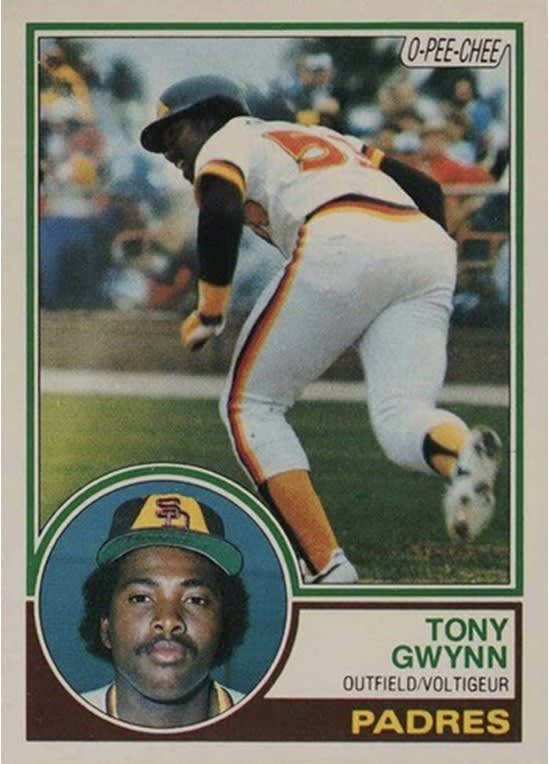
A PSA 10 has a value of $11,400
Tony Gwynn was the best contact hitter of his generation and one of the best ever to grace the diamond. The Padre's star was an 8-time batting title winner and a 15-time All-Star. And though mostly remembered for his offense, "Mr. Padre" was also an excellent all-arounder with 5 Golden Gloves. So, certainly one of the best, and among the best-loved, players of the era.
We all know and love the Topps Tony Gwynn rookie card. One of the definitive cards of the early 1980s. The 1983 Topps design was a banger, and the Gwynn card sings. The picture of the young hitter with a 1970s-style handlebar mustache is awesome. And you have a great shot of the still agile and limber young Gwynn doing his thing on the basepaths. That is particularly fun for those of us who remember the stout Tony of later years, rounding first base. The 1983 O-Pee-Chee #143 Tony Gwynn rookie card uses the same design. However, the Canadian version of the card is more scarce and therefore retains higher value. There are only 32 (!!) PSA 10s of this card. Looks like our Canadian friends did not appreciate this beauty as much as they should have.
#5 1985 Mark McGwire Topps Tiffany (1984 US Olympic Team) #401
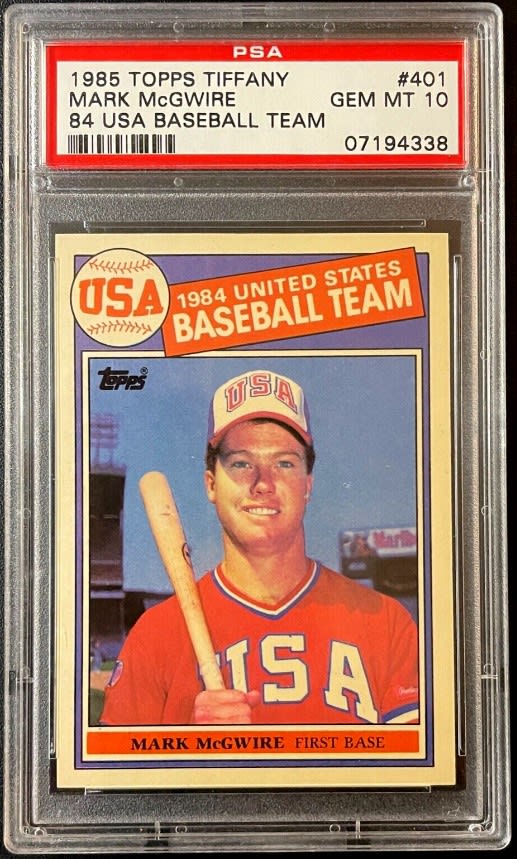
A PSA 10 has a value of $11,685
The value of this Mark McGwire card is proof that you don't need to be a Hall of Famer to have value. The man we call "Big Mac" had more home runs per bat than any other player, with one per every 10.61 at-bats. He also held the all-time record for most home runs in a season with 70, until one Barry Bonds broke the mark. However, Mark's legacy has been tarnished by the alleged use of performance-enhancing drugs.
Yet somehow, that has not hurt the value of his cards, especially not the 1985 Mark McGwire Topps Tiffany (1984 US Olympic Team) #401. I think part of the appeal is the innocent smile and sense of "the sky is the limit," which typifies the best rookie cards, contrasted with the turbulence of future events. It also helps that these 1985 Topps Tiffany cards don't grade well; there are only 35 gem mints out of 1,694.
#4 Bo Jackson Tops Traded Tiffany #50T
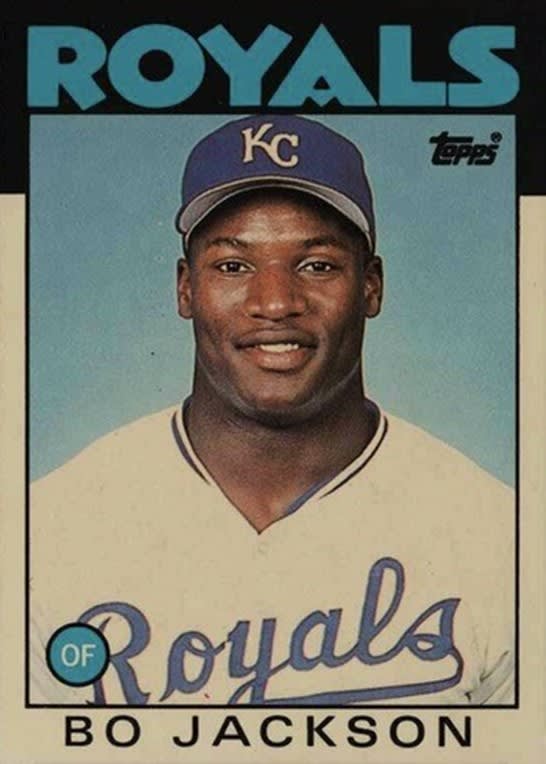
A PSA 10 has a value of $12,300
Bo Jackson could have been a star in any sport on earth. But, not one to take the easy way out, he didn't stand for the draft in just one professional sport. That is for losers. So, after being drafted by the New York Yankees in 1982, he was picked first overall by the Tampa Bay Buccaneers in the 1986 NFL Draft. He went on to be an All-Star in both sports and remains a figure of myth in American sports. Did we mention that Bo was the decathlon state champion in Alabama and set state records for the indoor high jump and triple jump? No one has equaled his multi-sport prowess since.
Not surprisingly, there is a small cottage industry around Bo Jackson rookie cards. While Bo Jackson Topps Traded Tiffany #50T traded is not the most iconic, it has emerged as the most valuable of the crop. The Tiffany cards are pretty similar to their regular Topps equivalents, which are worth a good deal less. But Tiffany variety is printed on better cardboard and the white card stock they were printed on. So, even though the pictures look pretty similar, the difference is striking in person. And the better quality of the Tiffany card really brings out that sparkling smile from the young Mr. Jackson.
#3 Roger Clemens 1985 Topps Tiffany #181
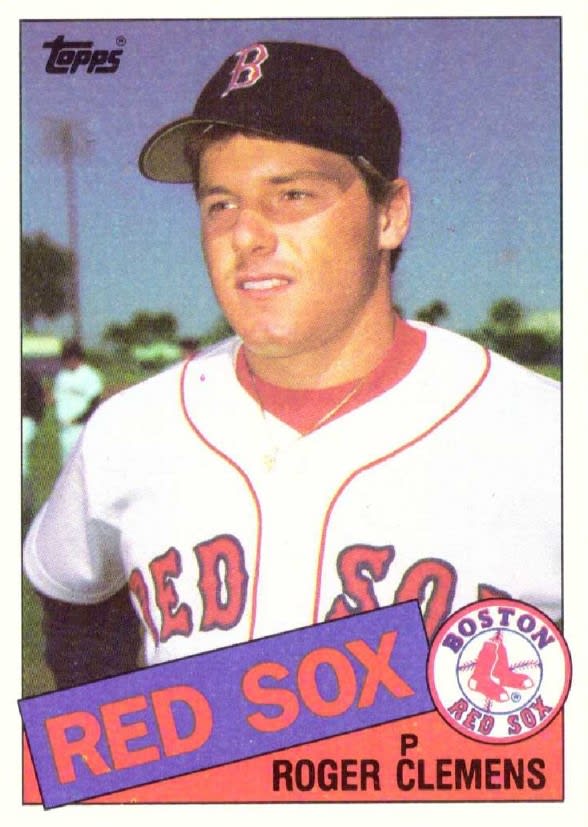
A PSA 10 has a value of $13,877
As you will see, one theme on this list is that many of the best rookies belong to players with careers tarnished by performance-enhancing drugs. Roger Clemens is the first of those. We could go over all of his accomplishments with a fine tooth comb, But the 7 Cy Young awards in his cupboard speak more clearly than anything. That is two more than any other pitcher. Ever.
Of course, the Roger Clemens 1985 Topps Tiffany #181 card is helped by the lower population counts of the Tiffany releases. However, the naysayers on this card note that it isn't a real rookie. The 1984 Fleer Update card is technically the only genuine rookie card of Roger "The Rocket" Clemens. However, there is a pretty good counterargument. The Fleer Update product wasn't ever sold in packs, which was the most common way of buying cards at the time. Instead, you had to buy this release in full form from hobby shops. Therefore, some don't consider it a full rookie since it wasn't his first card in a standard release. Either way, the Topps Tiffany has taken the top spot among Clemens rookies. The market has spoken, folks.
#2 1989 Bowman Tiffany #220 Ken Griffey Jr. Rookie Card
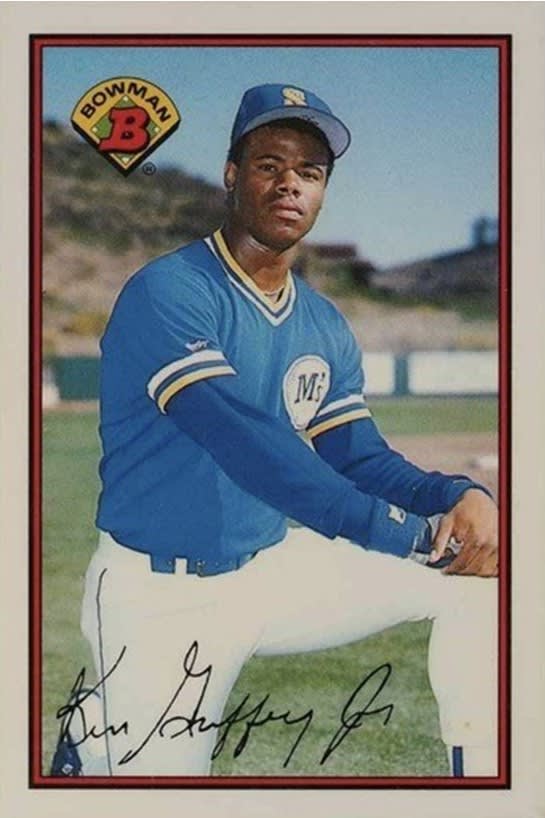
A PSA 10 has a value of $23,799
There were several highly-touted prospects in the 1980s. Folks like Daryl Strawberry and Greg Jeffries were treated like the second coming of Babe Ruth. But there was none with a greater buzz than Ken Griffey Jr. And of course, unlike the others, Griffey had a Hall-of-Famer career complete with 630 home runs, 13 All-Star appearances, and an incredible haul of 10 Golden Gloves. Ken also played with a unique grace that is indelibly imprinted in the minds of those of us who got to see him play. This has made him the most collectible modern baseball player, with records for the most graded PSA cards.
All that comes with a downside, of course. Griffey's base rookie cards are ridiculously overpopulated, and their value is correspondingly diminished. But the 1989 Bowman Tiffany #220 Ken Griffey Jr. card does not suffer from that problem. Bowman was just making its comeback and was not popular yet. So, the Tiffany edition of the 1989 Bowman baseball card set release was a shorter print version of a niche product. Correspondingly, there are only 156 PSA 10s in circulation. And the card is a beauty. Though not as iconic as Ken's instantly recognizable Upper Deck card, it also captures the boyish charm of "The Kid."
#1 Rickey Henderson 1980 Topps #482
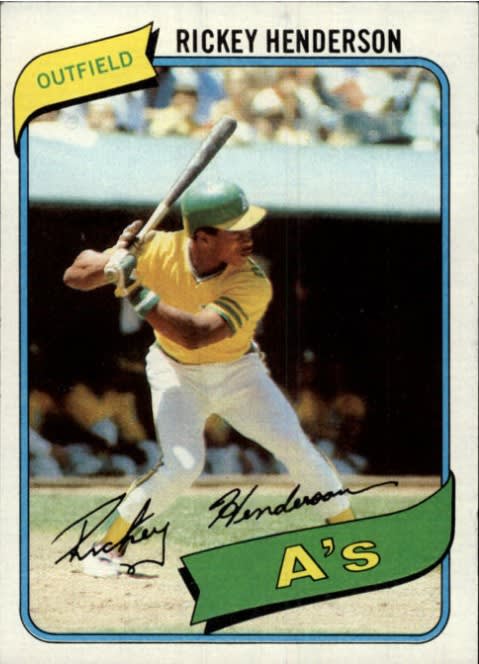
A PSA 10 has a value of $180,100
It isn't just that Rickey Henderson was one of the best players of the decade, though he certainly was all that. Henderson also reinvented the game and had accomplishments that seem fictional in contemporary baseball. The ultimate leadoff hitter had 1,406 career stolen bases. No one else has over 1,000. Rickey was so good that fans sometimes forget that he was the all-time best at other crucial aspects of the game. Henderson was (unintentionally) walked more than any player and hit more leadoff homers than anyone else. These skills together made Rickey the best leadoff hitter ever.
If that wasn't enough to generate value for his rookie cards, the card itself also perpetuates value. First, The Rickey Henderson 1980 Topps #482 card is an iconic example of understated beauty. It captures the compact yet utterly devastating batting stance of the "Man of Steal." Then of course, there is the grading issue. Yes, there are a ton of these cards out there. But centering issues of the 1980 Topps Baseball set (common to late 1970s and early 1980s Topps cards) make it an almost impossible PSA 10. Therefore, you will only find 26 PSA 10s out of an incredible 31,448 graded cards. That makes the gems incredibly valuable and significantly lowers the premium on PSA 9s.
Final Word On The Most Valuable Baseball Cards from the 1980s Price Guide & Values
There are probably fewer valuable 1980s cards than from any other decade. However, as you can see from this last, some items have substantial value. The sound cards are usually rookies of the best players with some form of artificial scarcity involved. For cards from the 1980 Topps release, for example, the centering lowers the grade for most items in the release. We also find two cards from Fleer Update on this list because of their relatively low circulation. Other releases to look for include smaller Topps-affiliated releases like Tiffany and O-Pee-Chee. But most of us just love the 1980s cards because of their quirky designs, handlebar mustaches, and general flair.
Updated 07/18/2023